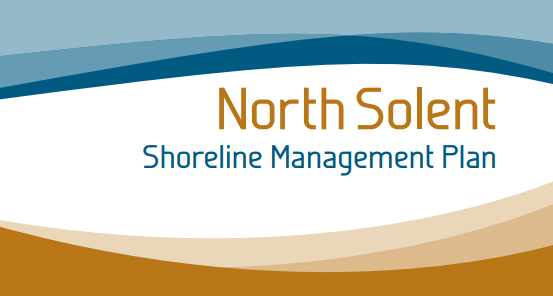International and European Designations
Natura 2000 sites
Natura 2000 sites comprise an ecological network of protected areas designated for their important European habitats and species, through the European Directive on the Conservation of Natural Habitats and of Wild Fauna and Flora 92/43/EEC ('Habitats Directive') and the Conservation of Wild Birds79/409/EEC ('Birds Directive').
These are Special Areas of Conservation (SACs) and Special Protection Areas (SPAs), respectively. The Conservation (Natural Habitats, & c.) Regulations 1994 transpose the Habitats Directive into UK law, and also apply to SPAs.
The aim of the Habitats Directive is to maintain the biodiversity of the Annex I and II habitats and species within a SAC at "favourable conservation status", taking into account the economic, social, cultural and regional requirements.
For each SAC, conservation objectives are proposed from which the management plans and monitoring programmes may be developed to maintain the site in favourable condition.
All SACs have to be assessed at least once every six years by Natural England (formerly English Nature). When designating the sites, attempts were made to keep them within SSSI boundaries, however, SACs can extend beyond Mean Low Water whereas SSSIs cannot be designated beyond the inter-tidal.
Under Regulation 33 (2) of the 'Habitats Directive', relevant authorities are expected to meet conservation objectives for the Natura 2000 sites through local management plans. The Regulations place a legal obligation on the UK government and its agencies:
- to maintain the favourable conservation status of their cited habitats and species
- to carry out an Appropriate Assessment of any plan or project that may have a significant effect on the designated sites
- not to carry out a plan or project that may adversely affect the integrity of the site, except under closely defined circumstances, which must include there being:
- no available alternatives
- over-riding public interest (which in the case of sites hosting a priority habitat or species, must relate to benefits to human health or the environment)
- provision of compensation.
Ramsar Sites
International wetland sites are designated under the Ramsar Convention 1971, and there are several Ramsar sites around the Solent, including the Solent and Southampton Water Ramsar Site that qualifies :
- for its tidal flows and wetland habitat types
- for its important assemblages of rare plants and invertebrates
- as an important staging area for migratory waterfowl
- by regularly supporting over 20,000 waterfowl in winter
- by regularly supporting internationally important wintering numbers of dark-bellied Brent Geese Branta bernicla bernicla and Black-tailed Godwit Limosa limosa.
Special Areas of Conservation
Special Areas of Conservation (SACs) have been designated according to rare or threatened European Annex I and Annex II habitats and species listed in the Habitats Directive.
There are two SACs within the Solent, the Solent Maritime SAC and the Solent and Isle of Wight Lagoons SAC.
The Solent Maritime SAC qualifies on the basis of the following Annex I habitats:
- coastal lagoons
- annual vegetation drift lines
- Atlantic salt meadows
- estuaries, mudflats and sandflats not covered by seawater at low tide
- perennial vegetation on stony banks
- Salicornia and other annuals colonising mud and sand
- sandbanks which are slightly covered by sea water all the time
- shifting dunes along the shoreline with Ammophila arenaria
- Spartina swards (Spartinion maritimae)
The Solent and Isle of Wight Lagoons SAC contains a series of brackish lagoons located in the Pennington and Oxey marshes inland of the Lymington to Keyhaven seawall, and elsewhere such as at Gilkicker.
These coastal lagoons (created when original seawall/embankments were dug and constructed) are priority habitats in danger of disappearance, and are considered to be one of the best areas in the UK.
Special Protection Areas
The Birds Directive refers to the preservation, maintenance and re-establishment of habitats in order to protect and support internationally important bird populations, through the designation of Special Protection Areas (SPAs). SPAs are classified for rare and vulnerable birds, listed in Annex I of the Birds Directive, and for regularly occurring migratory species.
The Solent and Southampton Water SPA qualifies, under the Birds Directive:
- by regularly supporting the following nationally important breeding populations of Annex I species: Mediterranean Gull Larus melanocephalus; Sandwich tern Sterna sandvicensis; Common tern Sterna hirundo; Roseate tern Sterna dougallii; Little tern Sterna albifrons.
- a wetland of international importance by regularly supporting over 20,000 waterfowl in winter or 20,000 seabirds
- by regularly supporting the following internationally important wintering migratory waterfowl Dark- bellied Brent Geese Branta bernicla bernicla; Teal Anas crecca; Ringed plover Charadrius hiaticula; Black-tailed godwit Limosa limosa.
European Marine Sites
European Marine Sites are defined in the Habitats Regulations as any part of a European site (SAC, SPA) covered (continuously or intermittently) by tidal waters or any part of the sea up to the seaward limit of territorial waters.
The Habitats Directive is being implemented through a single Solent European Marine Sites (SEMS) Management Scheme for the Hampshire coast. The SEMS comprises a Special Area of Conservation and three special Protection Areas (but excludes Pagham Harbour).




